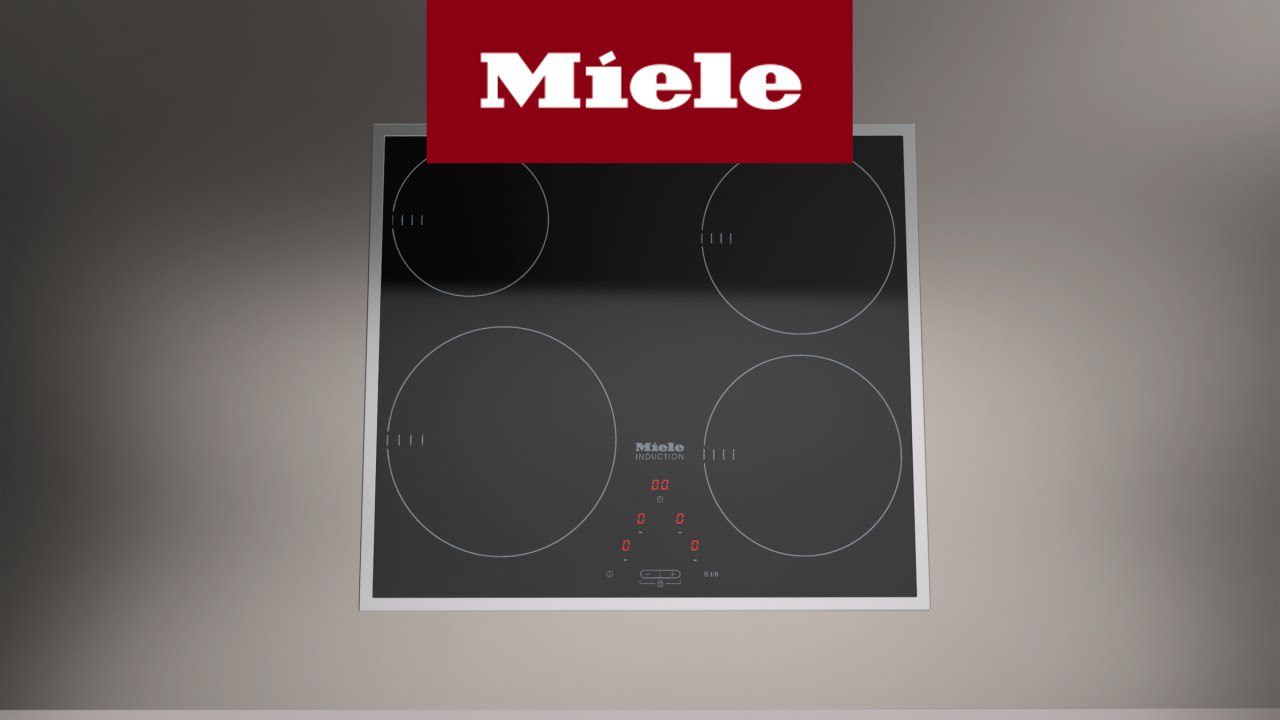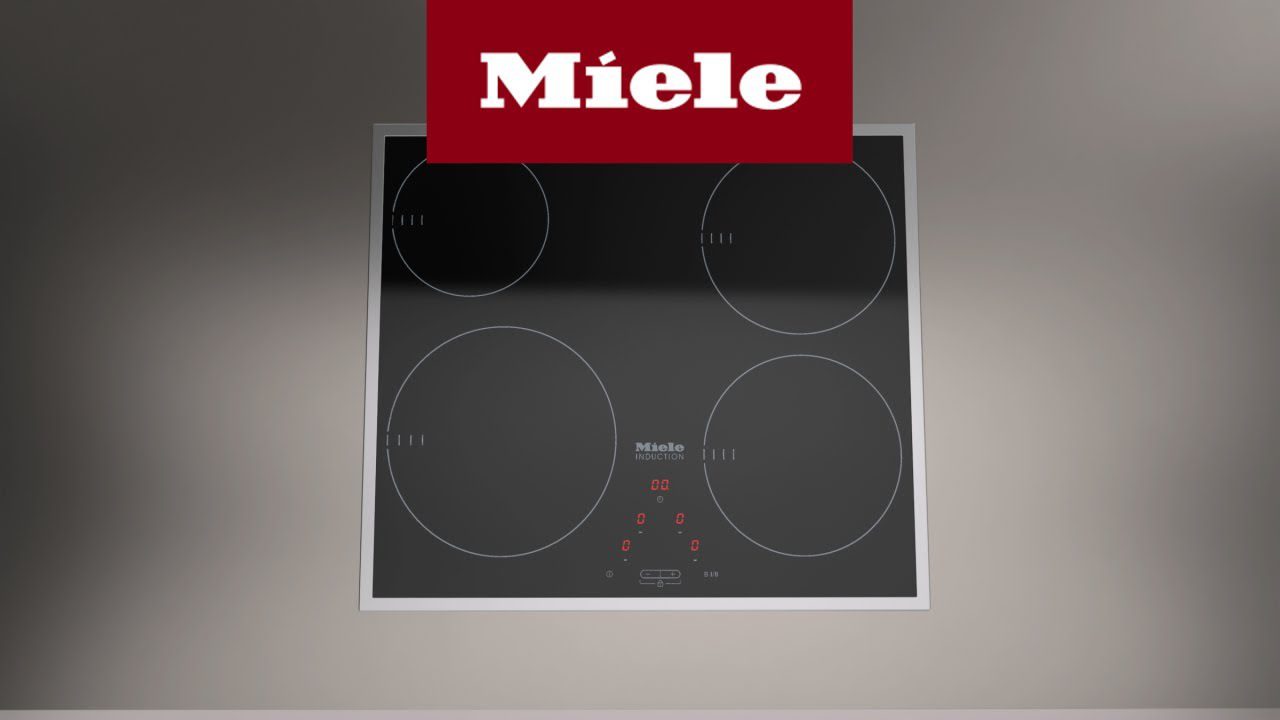To reset an induction cooktop, first, ensure it’s powered off and unplugged. Wait for a few minutes to allow the cooktop to completely cool down.
Plug it back in, and press and hold the power button for approximately five seconds until you see the lights or indicators reset, indicating the cooktop has been successfully reset. Induction cooktops have become popular due to their energy efficiency and precise cooking capabilities.
However, occasional issues may arise that require resetting the cooktop to restore functionality. Whether it’s an unresponsive control panel or a malfunctioning burner, resetting the cooktop can often resolve these problems. In this guide, we’ll provide step-by-step instructions on how to reset an induction cooktop so you can get back to cooking in no time. Just remember to follow these directions carefully to ensure your safety.
Understanding The Induction Cooktop Reset Process
To reset an induction cooktop, follow a simple process that involves locating the reset button or power supply and holding it down for a few seconds. This quick and easy method ensures the cooktop is ready for use again without any hassle.
Induction cooktops offer a modern and efficient way of cooking, using electromagnetic fields to heat your cookware directly. However, just like any other electronic appliance, they can experience glitches and issues. In such cases, resetting the induction cooktop can often solve the problem and restore optimal performance.
Let’s delve into the details of the induction cooktop reset process to understand its importance and how it works.
Exploring The Basic Principles Of Induction Cooktops
To comprehend the reset process for induction cooktops, it’s crucial to grasp the underlying principles behind their operation. Here are some essential aspects to consider:
- Magnetic induction: Induction cooktops utilize magnetic fields to generate heat. When an electrical current runs through a coil beneath the cooktop’s glass surface, it induces a magnetic field. This magnetic field interacts with the base of your cookware, activating heat-generating eddy currents.
- Direct heat transfer: Unlike traditional gas or electric cooktops, induction cooktops offer faster and more precise heat control. The electromagnetic energy created by the cooktop transfers directly to the cookware, rapidly heating it up. This results in efficient cooking and reduced energy consumption.
- Instantaneous response: Induction cooktops provide immediate response to changes in temperature settings. They can heat up or cool down almost instantly, allowing for precise adjustments during the cooking process.
How A Power Outage Or Electrical Fault Can Affect The Cooktop
Power outages or electrical faults can disrupt the normal functioning of an induction cooktop. When such circumstances occur, it’s essential to reset the cooktop to rectify any issues. Here are a few ways a power outage or electrical fault can affect your induction cooktop:
- Disrupted control settings: Power outages can cause the cooktop to lose its programmed settings. As a result, you may notice that the control panel becomes unresponsive or displays errors.
- Sensor malfunctions: Electrical faults or power fluctuations can lead to sensor malfunctions in the induction cooktop. This can affect the accuracy of temperature readings or cause the cooktop to shut down unexpectedly.
- Safety features activation: Some induction cooktops are equipped with safety features that automatically switch off the cooktop under certain circumstances. Power interruptions or electrical faults can trigger these safety features, requiring a reset to resume normal operation.
The Importance Of Resetting The Cooktop For Optimal Performance
Resetting an induction cooktop is a vital troubleshooting step to ensure optimal performance. By resetting the cooktop, you can eliminate temporary glitches or errors that might have occurred. Here’s why resetting is crucial:
- Restoring default settings: Resetting the cooktop allows it to return to its default settings, clearing any issues that might have caused the malfunction.
- Troubleshooting minor faults: Sometimes, an induction cooktop might encounter minor glitches due to power interruptions or electrical fluctuations. Resetting can often resolve these issues without the need for professional assistance.
- Enhancing performance: Resetting the cooktop periodically can help maintain its peak performance over time. It allows the cooktop to recalibrate and optimize its internal sensors and components.
Understanding the induction cooktop reset process is vital for troubleshooting and ensuring optimal performance. By exploring the basic principles of induction cooktops, recognizing the effects of power outages or electrical faults, and realizing the importance of resetting, you can efficiently and effectively troubleshoot any issues that may arise with your induction cooktop.


Credit: homesclubs.com
Steps To Reset An Induction Cooktop
Resetting an induction cooktop is a straightforward process. Follow the manufacturer’s instructions by unplugging the unit, waiting for a few minutes, and then plugging it back in to reset it.
Identifying The Control Panel And Power Source
To reset an induction cooktop, the first step is to identify the control panel and power source. Here’s what you need to do:
- Locate the control panel on the cooktop. It can usually be found at the front or side of the appliance.
- Identify the power source or power cord connected to the cooktop. It is often located at the back or underneath the cooktop.
Switching Off The Cooktop And Disconnecting It From Power
Once you have identified the control panel and power source, follow these steps to switch off the cooktop and disconnect it from power:
- Ensure that the cooktop is turned off by pressing the power button or turning the knobs to the off position.
- Unplug the power cord from the electrical outlet or, if the cooktop is hardwired, turn off the circuit breaker dedicated to the cooktop.
Waiting For The Cooktop To Cool Down Before Proceeding
Before proceeding with the reset process, it is important to allow the cooktop to cool down. Follow these guidelines:
- Give the cooktop sufficient time to cool down after usage. This will help protect your hands and prevent any potential accidents.
- Make sure the surface of the cooktop is cool to the touch before proceeding to the next steps.
Locating The Reset Button Or Control On The Cooktop
Next, locate the reset button or control on the cooktop. The reset feature is designed to help in situations when the cooktop malfunctions. Here’s what you need to do:
- Look for a small button or control labeled “Reset” on the control panel. It is typically positioned near other buttons or controls.
- The location may vary depending on the manufacturer and model of the cooktop, so refer to the user manual if you cannot find it.
Pressing And Holding The Reset Button For A Specific Duration
Once you have located the reset button or control, follow these steps to perform the reset:
- Press and hold the reset button for a specific duration, usually around 3 to 5 seconds. Refer to the user manual for the exact duration.
- Keep a steady pressure on the reset button until you see the cooktop’s indicators or display respond, indicating that the reset process has initiated.
Confirming The Successful Reset Through Indicators Or Display
After pressing and holding the reset button, it is important to confirm that the reset process was successful. Here’s what you should do:
- Look for any indicators or messages on the cooktop’s display that verify the successful reset.
- Check if the cooktop is functioning properly after the reset. Test its various functions and features to ensure everything is back to normal.
Remember to consult the user manual of your specific cooktop model for accurate instructions on resetting the induction cooktop. These general steps should give you a good starting point. Now you’re ready to reset your induction cooktop and get back to cooking!
Troubleshooting Common Issues Requiring A Reset
Resetting an induction cooktop is a common troubleshooting technique for resolving various issues. Learn how to perform a reset to keep your cooktop functioning smoothly and efficiently.
Induction cooktops offer a convenient and efficient way to cook, but sometimes they can encounter issues that require a reset. Below, we will discuss common problems you may encounter and the steps you can take to troubleshoot them effectively:
Cooktop Not Responding To Touch Or Control Inputs
- Ensure that the cooktop is properly connected to a power source.
- Clean and dry the control panel to remove any moisture or residue that may be interfering with the touch controls.
- Check for any protective film or cover on the control panel that needs to be removed.
- Reset the cooktop by turning off the power from the main switch or circuit breaker and then turning it back on after a few minutes.
Error Codes Or Warning Lights On The Display
- Error codes or warning lights on the display can indicate specific issues. Refer to the user manual to understand the meaning of these codes and take appropriate action.
- Power cycle the cooktop by turning it off from the main switch or circuit breaker, waiting for a few minutes, and then turning it back on.
- If the error persists, contact the manufacturer or a qualified technician for further assistance.
Cooktop Not Heating Or Not Reaching Desired Temperature
- Check that the cookware being used is suitable for induction cooking. Induction-compatible cookware is required for the cooktop to operate effectively.
- Ensure that the cookware is centered and properly positioned on the cooking zone. If it is not placed correctly, the cooktop may not detect the cookware or heat it evenly.
- Verify that the cooking zone is not in the “Power Boost” mode or any other specific setting that may limit the heat output.
- Power cycle the cooktop by turning it off from the main switch or circuit breaker, waiting for a few minutes, and then turning it back on.
Unusual Sounds Or Odors During Operation
- Unusual sounds may be an indication of a faulty component or improper installation. It is recommended to contact the manufacturer or a qualified technician to inspect and resolve the issue.
- Odors during the initial use of an induction cooktop are normal and should dissipate after a few uses. However, if the odor persists or if it is a burning smell, immediately turn off the cooktop and seek professional help.
Investigating Power Supply Issues And Circuit Breakers
- Check if there is a power outage in your area. If so, wait for the power to be restored before troubleshooting further.
- Inspect the power cord and ensure it is securely connected to the cooktop and the power outlet.
- Check the circuit breaker connected to the cooktop and reset it if necessary. A tripped breaker can cause the cooktop to lose power.
- If the problem persists, consult an electrician to inspect the power supply and circuit breakers.
Remember, these troubleshooting steps are general guidelines, and it’s important to refer to your induction cooktop’s user manual for specific instructions. If the issue remains unresolved, it’s recommended to reach out to the manufacturer’s customer support or a qualified technician for assistance.
Additional Tips For Maintaining And Optimizing Your Induction Cooktop
To reset your induction cooktop, first, turn off the power supply and wait for a few minutes. Then, turn the power back on and carefully follow the manufacturer’s instructions to reset the cooktop’s settings. Remember to consult the user manual for specific guidance on resetting your particular induction cooktop model.
Regular Cleaning And Maintenance To Prevent Issues:
- Keeping your induction cooktop clean is essential for its optimal performance and longevity. Here are some tips to ensure regular cleaning and maintenance:
- Wipe the cooktop surface after each use using a soft cloth or sponge.
- For stubborn stains or spills, use a non-abrasive cleaner specifically designed for induction cooktops.
- Avoid using harsh chemicals or abrasive materials, as they can damage the cooktop surface.
- Clean the ventilation system regularly to prevent grease buildup and ensure proper airflow.
- Check and clean the cooktop’s underside, as debris can accumulate over time.
Using Appropriate Cookware For Induction Cooktops:
- Using the right cookware on your induction cooktop is crucial to ensure efficient heating and prevent damage. Consider the following points:
- Choose cookware specifically labeled as “induction compatible” or “induction ready.”
- Ensure the base of the cookware is flat and made of magnetic material, such as stainless steel or cast iron.
- Avoid using aluminum, copper, or glass cookware, as they are not suitable for induction cooking.
- Check the cookware’s bottom for any dents or warping before using it on the cooktop.
- Regularly inspect the cookware for any signs of damage that could affect its performance on the induction cooktop.
Avoiding Overheating Or Excess Spillage On The Cooktop:
- Preventing overheating and minimizing spillage on your induction cooktop can help maintain its functionality and prolong its lifespan. Follow these guidelines:
- Monitor the cooktop while cooking and adjust the heat settings accordingly to prevent excessive heat buildup.
- Avoid using high heat settings for prolonged periods, as it can lead to overheating.
- If a spill occurs, promptly clean it up to prevent it from burning and potentially damaging the cooktop surface.
- Use cookware with lids when cooking to reduce the chances of spills and splatters.
- Be cautious when using oils or fats, as they can easily overflow and create a mess if not properly controlled.
Monitoring And Addressing Signs Of Wear And Tear:
- Regularly checking your induction cooktop for signs of wear and tear is important to catch any potential issues early on. Here are some steps to follow:
- Inspect the cooktop’s surface for any scratches, cracks, or chipped areas that could affect its performance.
- Test each heating zone to ensure it reaches the desired temperature and maintains it consistently.
- If you notice any abnormalities, such as uneven heating or unusual sounds, consider contacting a professional for assessment.
- Keep an eye on the control panel and buttons, ensuring they are responsive and functioning correctly.
- Stay vigilant for any warning indicators or error codes displayed on the cooktop, addressing them promptly.
Contacting Professional Assistance For Complex Issues:
- While regular cleaning and maintenance can prevent common issues, complex problems may require professional assistance. Follow these guidelines:
- If you encounter any electrical issues, such as tripped breakers or power failures, immediately reach out to a qualified electrician.
- For technical problems or malfunctions that cannot be resolved through basic troubleshooting, contact the manufacturer’s customer support or a certified technician.
- Professional assistance ensures that complex issues are addressed correctly, reducing the risk of further damage or safety hazards.
- Never attempt to repair or modify the induction cooktop yourself, as it may void the warranty and pose safety risks.
Remember, following these additional tips for maintaining and optimizing your induction cooktop will help you enjoy its benefits for years to come. Keep it clean, use suitable cookware, avoid overheating and excess spillage, monitor signs of wear and tear, and seek professional assistance when needed.
Happy cooking!
Frequently Asked Questions Of How Do You Reset An Induction Cooktop
Can I Reset An Induction Cooktop If It Stops Working?
Yes, you can reset an induction cooktop by turning it off and unplugging it for a few minutes. This allows the electronics to reset and may solve any temporary issues. After the reset, plug it back in and turn it on to see if it starts working again.
How Do I Reset My Induction Cooktop If The Power Goes Out?
If the power goes out, you can reset your induction cooktop by turning off the power supply and then turning it back on after a few minutes. This will allow the cooktop to reset and should restore it to its normal functioning once the power is restored.
Is There A Specific Procedure To Follow While Resetting An Induction Cooktop?
To reset an induction cooktop, start by turning off the cooktop and unplugging it from the power source. Wait for a few minutes to allow the electronics to reset. Then, plug the cooktop back in and turn it on. Following this simple procedure should reset your induction cooktop and resolve any minor issues.
Why Would I Need To Reset My Induction Cooktop?
Sometimes, resetting an induction cooktop can help resolve temporary issues or glitches that may arise due to power fluctuations or minor malfunctions. It can also be helpful if the cooktop stops working after a power outage. Resetting the cooktop allows the electronics to recalibrate and restore normal functioning.
Conclusion
Resetting an induction cooktop is a simple process that can be done by anyone. By following the manufacturer’s instructions and taking a few precautionary steps, you can easily troubleshoot any issues and get your cooktop up and running again. Remember to turn off the power, wait a few minutes, and then power it back on to initiate the reset.
If the reset doesn’t solve the problem, it might be a good idea to contact the manufacturer or a professional for assistance. Regular maintenance and cleaning can also help prevent the need for frequent resets. Taking the time to understand how to reset your induction cooktop can save you time, money, and frustration in the long run.
So, go ahead and confidently troubleshoot any issues with your induction cooktop knowing that you have the knowledge and skills required to reset it effectively.

